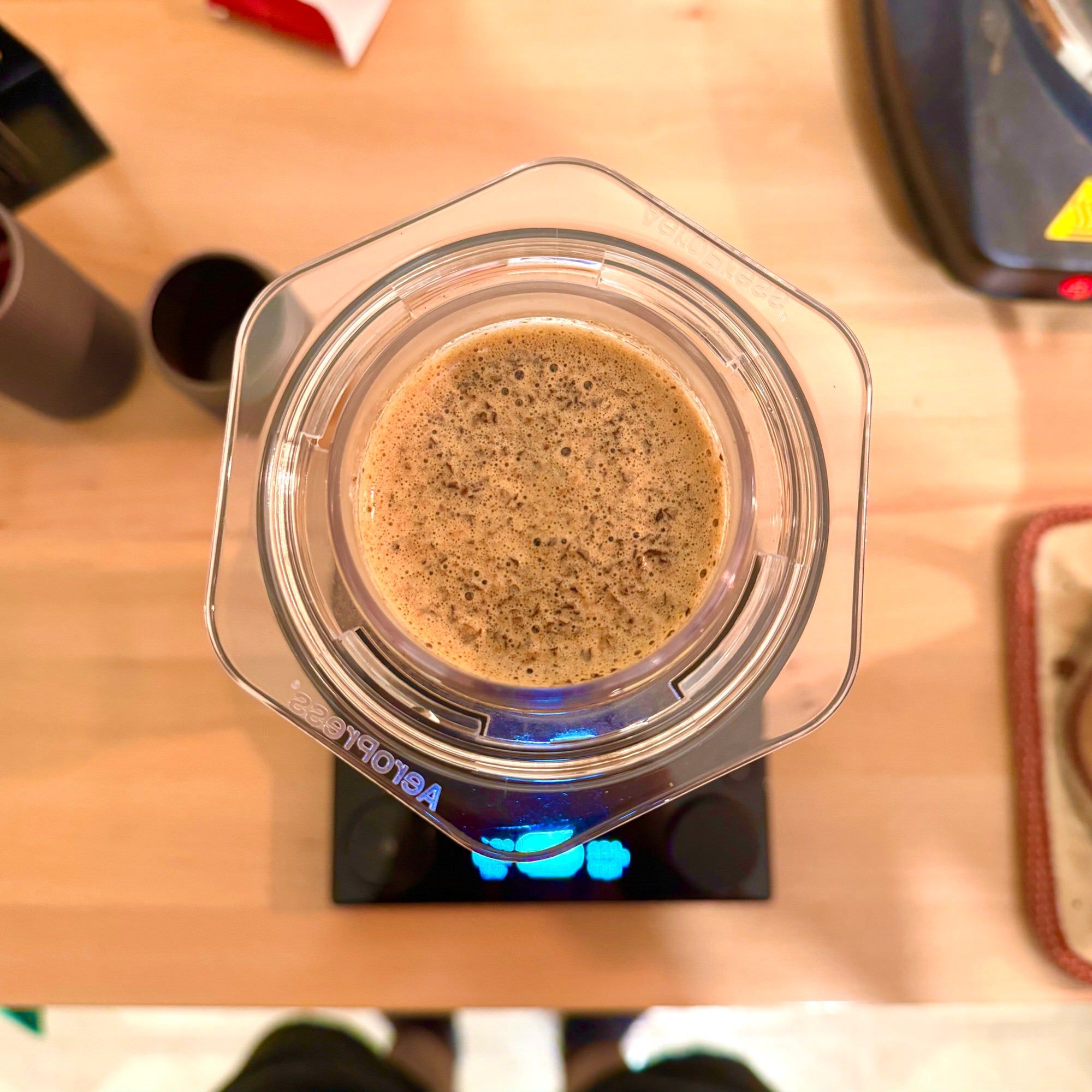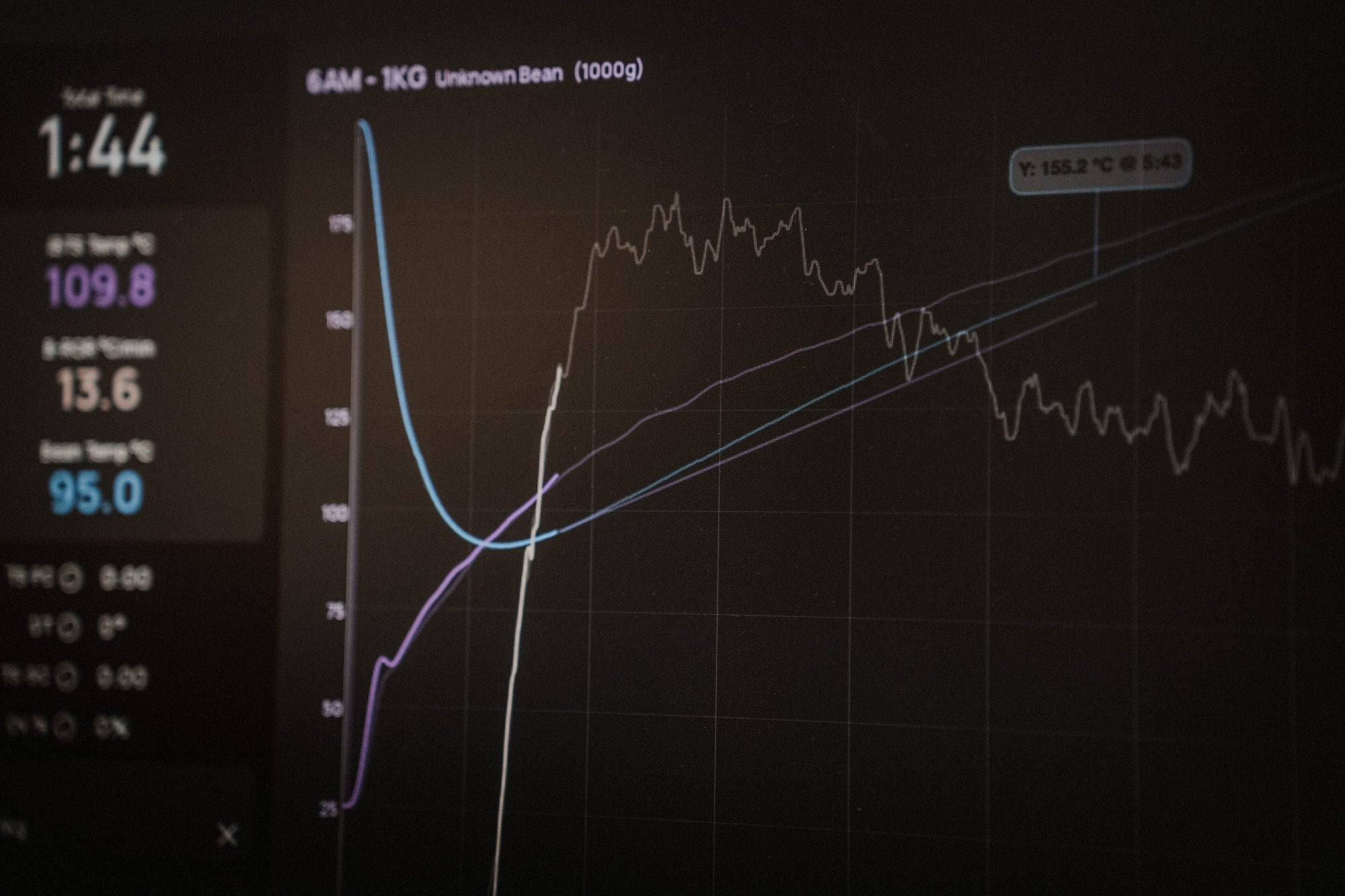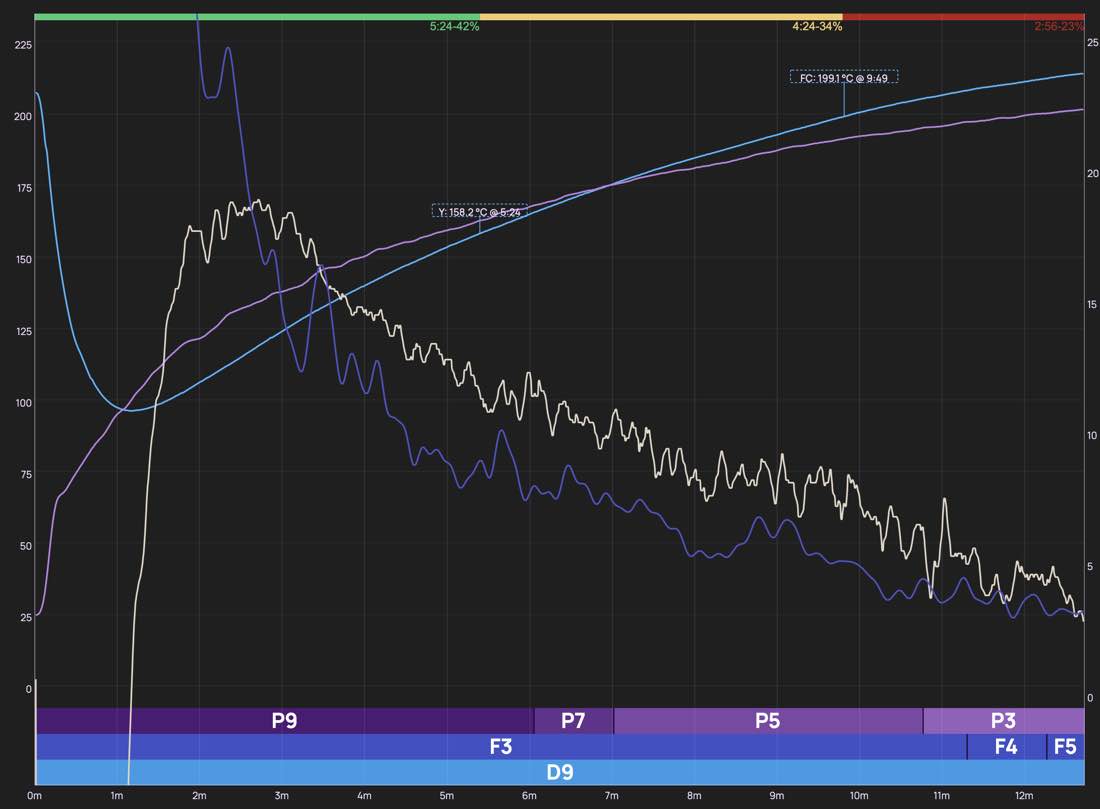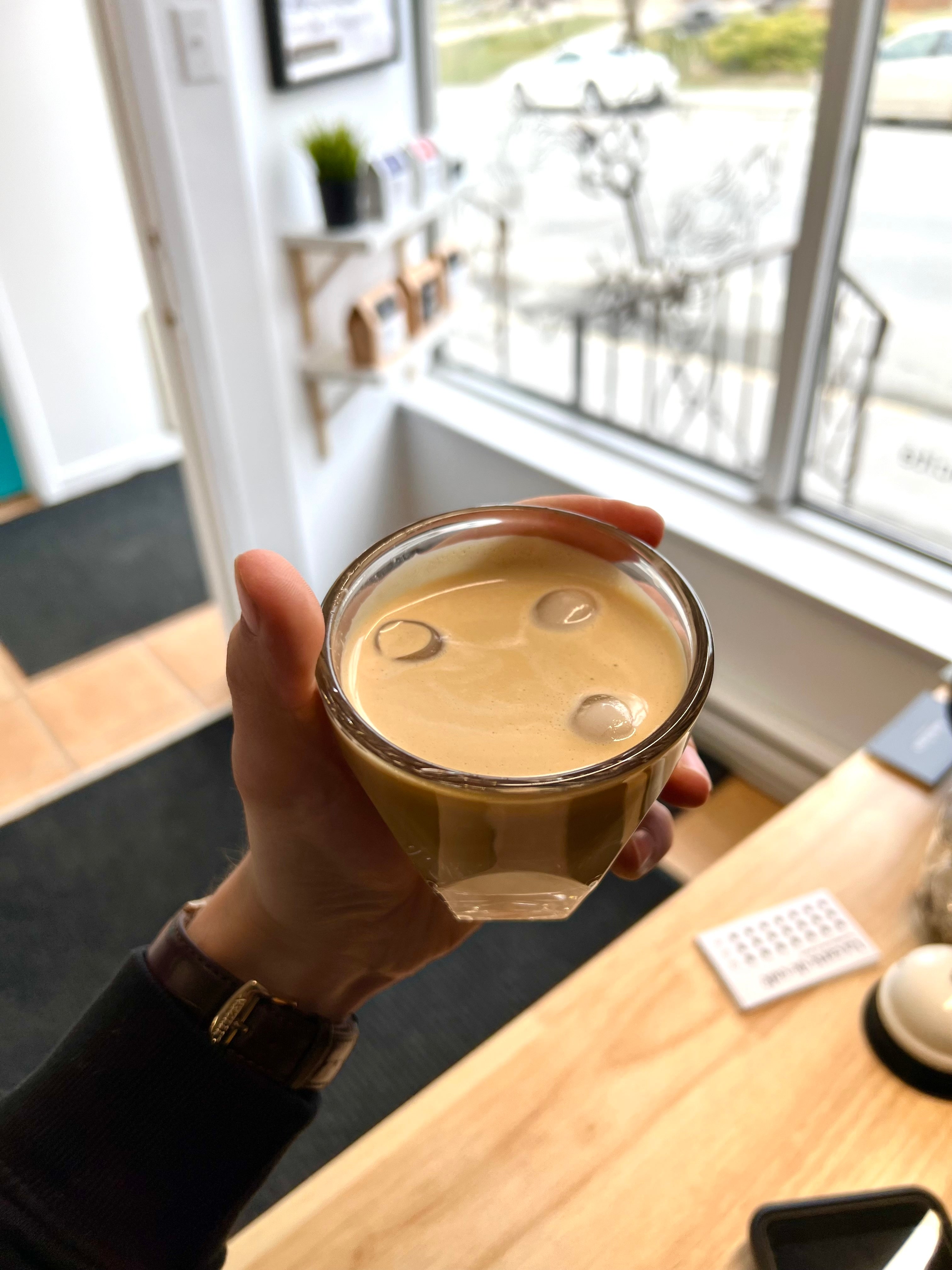Free shipping across Canada 2 bags or 1kg 🤩
Don’t throw out your old coffee!
Last edit Jun 4, 2024 ● Published Jun 4, 2024 ● Louis-Charles Blais
We all have that one bag of coffee in our cabinet that’s just a bit too old and starts to smell like stalled coffee or dried raisins. It might have been a very enjoyable, fruity and sweet coffee but has just become a boring bitter bag of beans taking up dust. I just hurts ‘cause you know it’s going to be undrinkable so you should just throw it out but at the same time you don’t want to throw out such good coffee. So you just leave it there and pretend it doesn’t exist.
I happened to be craving a cup of coffee tonight. Being a coffee roaster, you’d assume I always have a fresh bag of coffee on hand. That’s absolutely not the case. Having the best coffee gear at hand at the coffee shop, I literally never ever make coffee at home. Because of that, the only coffee I had on hand tonight was an old bag of Kayanza Munkaze Sebatigita, a washed coffee from Burundi we used to sell at Nucleus. Very great coffee, nice sweetness, nice clarity, notes of berries and just the right touch of acidity. It had been roasted on February 20th, so about 3 and a half months old…
Why does old coffee taste bad?
As coffee rests, the gas trapped inside gets out and oxygen gets in, interacting with the compounds of the coffee and changing its flavors. Typically, you’d say coffee that’s old gets bitter and looses its aromas. That’s not entirely true.
The aroma from the coffee itself doesn’t « get away », it just stops to naturally get out of the bean after some time. When you open a fresh bag of coffee, that coffee has been liberating some gas since it was packaged. While liberating the gas, it delivers its beautiful aromas with it and that’s what you smell when you open the bag. As the coffee loses all its gas, the aromas stop to get out and so the beans smell like nothing and you may start to smell the oxydation happening as oxygen has replaced the CO2.
All of that to say : old coffee may smell like nothingness, it doesn’t mean it has no potential at all to produce a great cup. There are a couple things we can do to reduce the perceived bitterness and increase the flavor. All those things are aimed at one single goal : reduce the extraction level while keeping the flavor.
With research and experimentation over the years, it has been proven that the aroma of coffee generally comes early in the brewing process. We start by extracting the acidity and go all the way to the bitterness. One could say briefly that the more you extract, the more bitter. There’s more to it than that but you get the point.
My theory was that if I could get it just right, I could have a very low extraction that would reduce the perceived bitterness and focus on the remaining flavor of the coffee without bringing astringency.
The recipe
I went ahead and took my aeropress. Here’s what I started with :
Grind size
As we were trying to reduce the extraction, I knew I would need a very coarse grind size. The finer the particles, the more contact surface you have, the more extracted the coffee is gonna be. I used my Chestnut C2 at a setting of 30, which would resemble 14 on an EK43. Coarser than a V60, closer to a french press.
Water temperature
As we want to stay away from bitterness and reduce extraction, I went ahead and set my water temperature to 84 degrees celcius.
Brew ratio
The brew ratio we’re gonna use is 1:5. Don’t panic, I know it’s very low. The goal here is to have a very low extraction concentrate to dilute it afterwards. It started with a 1:6 ratio but had better results with the 1:5 ratio.
Brew time
The brew time must be very low. As we are using a small ratio and want to have the less bitterness possible, we’re gonna keep everything under 1min30. I started with 1min15 but the cup had more sweetness with 1min30 and still not very much bitterness nor astringency.
Aeropress filters
The last thing I want to talk about is the filter. When using a fine filter, you’re risking that the fines of your coffee (btw coarser grind allows fines to get to the bottom more easily) clug the filter and that the pressure applied on the aeropress extract those fines and produces astringency in the cup. We want to prevent that so we’re gonna use 2 filters to block the fines even more. I tried using 3 filters but the more you use filters, the less body you’re gonna get. The filters capture the fat in the liquid as so reduces the body of the end cup. I stuck with 2 filters for this light washed coffee. If it had been a natural or a darker coffee, I would’ve considered using 3 or 4 filters to reduce astringency and bitterness.
Brewing, finally
Here’s what I did :
1. Grind 25g of coffee to a very coarse grind
2. Add 2 filters to the aeropress cap and wet just a little bit
3. Place your aeropress in the inverted position
4. Start your timer and add 125g of water at 84 degrees celcius
5. At 30sec, agitate the bed with a WDT tool or a spoon to let the gas completely come out and put on the cap. Remove the air trapped at the top by gently pressing down until the filter is flush with the coffee.
6. At 45sec, flip the aeropress on top of a cup or a pitcher.
7. At 1min, start pressing down very gently, aiming to finish at 1min30
8. Finish pressing at 1min30
9. Put a clean cup on your scale, tare and pour your brew in
10. Dilute it up to 150g or to your liking





The end cup was round, a touch of acidity as I remembered this coffee had, great sweetness and still a bit of berry flavors hanging there. Not much bitterness and no astringency at all.
I actually tried multiple volumes of dilution by adding a bit of water, tasting and adding more until I was satisfied with the strength. I recommend you do the same as I figure different coffees might be good at different levels of dilution. Don’t go too fast as it can rapidly start to taste watery.
I also recommend you adjust the extraction time to your liking depending on the coffee you have on hand. I guess a younger coffee (2 months or so) could have a longer extraction time (1min45) and taste just as good. Same concept goes for older coffees.
If you don’t have an aeropress
Buy one at cafefabrique.com ;)
Jokes aside, the principles discussed here can be applied elsewhere. The main concept is to reduce the extraction. That could be done with a V60 by having a coarser grind and pouring faster (like a 20sec bloom and a single pour after). Could be done with a NextLevel Pulsar by having a coarser grind, doing a single pour with closed valve and low agitation and draining everything very fast. I haven’t tried these yet but I plan on doing so!
Final notes
One thing I love about the evolution of specialty coffee is the discovery of new techniques. Trying out stuff and messing around with the different variables of coffee brewing can result in experiencing unique cups and/or finding something unexpected in a particular coffee.
The one thing I hope you’ll save for later is : don’t throw out your old beans, use your coffee geeking skills to make use of them instead :)
The ultimate key to making perfect coffee?
Freshly electric roasted specialty beans

Eldorado - Best seller for 3 years
An affordable specialty coffee from Brazil. Medium roast with comforting chocolate aromas. Ideal for a well-balanced, smooth, and comforting espresso.
Eldorado is produced by the Barbosa farm in Brazil, a partner of Nucleus for 3 years now.




Comments
There are no comments.
Your comment